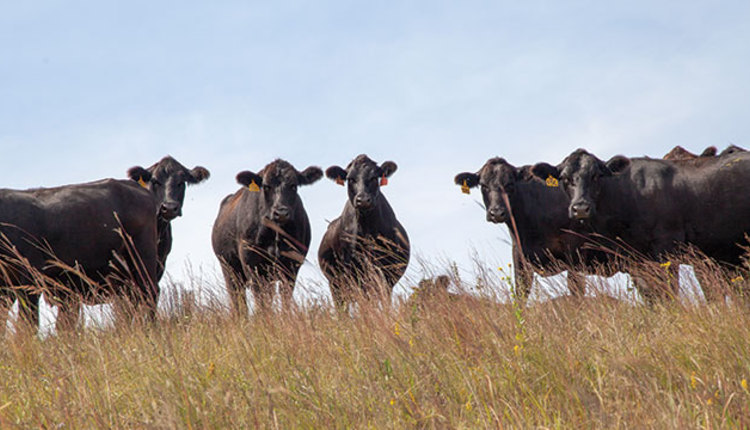Mind your metrics |
| By Jim Gerrish |
|
|
 One of the fundamental principles of sound grazing management is matching your stocking rate to the carrying capacity of the land. A lot of farmers and ranchers sometimes think stocking rate and carrying capacity mean the same thing. They are, however, two very different concepts. Stocking rate is simply the number of animals or grazing pressure we are putting on the land. If we put 10 cows on 10 acres, then the stocking rate is one cow per acre. Because ruminant animals eat in proportion to their body weight, it is more important to think of stocking rate in terms of grazing pressure or feed demand rather than just head per acre. Think animal units Ten cows, each weighing 1,500 pounds, deliver almost 50% more grazing pressure or feed demand than do 10 cows weighing 1,000 pounds each. Ten lactating cows may deliver anywhere from 130% to 180% more grazing pressure than the same 10 cows do when they are dry. Thinking about stocking rate just in terms of head per acre or acres per head is very dangerous because the grazing demand varies depending on body size and stage of production. My preferred way of expressing stocking rate is in standard animal unit (AU) equivalents. All an AU really refers to is a daily consumption of 26 pounds of dry forage. Our stocking rate can be expressed as how many AU will the land support for how many days or animal unit-days (AUD). Carrying capacity is the amount of grazing activity the land can support with the livestock performing at a profitable level and the health and productivity of the landscape being maintained or enhanced. We can express this demand as how many AUD does this class of animal demand over a period of time. Some people mistakenly believe carrying capacity is determined entirely by location. For example, if you live in a given county of a particular state, the expected carrying capacity is 5 acres per AU. How do we then explain the ranch down the road that is running a cow on 3 acres or the other neighbor who is using 10 acres per cow? Environment sets the upper limit of potential carrying capacity. It is our management choices that determine how much of that potential we capture. The four factors of carrying capacity we can manage are forage production, seasonal utilization rate, daily forage intake by the grazing animal, and length of the grazing season. There are some obvious things we can do to change productivity such as irrigation, fertilization, tearing out the old pasture, and seeding the latest wonder grass. Equally obvious is that all of these practices cost money and may or may not be profitable to implement. There are more subtle things we can do to dramatically change pasture production. Consistently leaving 4 to 5 inches postgrazing residual compared to 2 to 3 inches can easily change forage production and pasture yield by 50%. It doesn’t cost you any money to make that choice, but it pays you back immensely. Grazing a particular range unit in the winter months rather than the active growing season may result in more AUDs per acre harvested. Grazing management itself can change the productivity of a pasture. In set-stocked grazing, the typical seasonal utilization rate is 30% to 40% of the annual forage production if we are maintaining acceptable animal performance without supplemental feeding. We have achieved 80% to 90% seasonal utilization with daily rotation in productive pasture environments. That is more than twice the carrying capacity of set-stocking in the same environment. We need to manage the daily forage intake to ensure our livestock are performing at the level we require for this to be a profitable business. Intake is largely determined by how selective we allow the animals to be in their grazing choices. For high-performing animals, we need to allow more selection opportunity. For lower performance expectations, we can ask them to graze more severely. Maximize grazing days Since grazing standing forage is almost always lower cost than feeding machine-harvested forage, we generally want to stock at a level that allows us to graze for as many days as possible. We extend grazing days by rationing out our standing feed with time-controlled grazing. Because pasture does not grow at the same rate every day of the year, our feed supply is constantly changing. This means carrying capacity is not constant. Forage demand of our livestock also changes on an ongoing basis. For breeding females, feed demand is cyclic and highly predictable. Highest demand is at peak lactation and lowest demand is postweaning. Growing stock have greater demands as they grow. This means our effective stocking rate is also constantly changing. Keeping stocking rate in balance with carrying capacity requires ongoing monitoring of feed supply and livestock inventory. Correcting stocking rate mistakes through purchasing additional feed or selling animals on depressed markets can be major financial challenges. Proactive management is how we avoid those pitfalls. This article appeared in the March 2020 issue of Hay & Forage Grower on page 9. Not a subscriber? Click to get the print magazine. |
